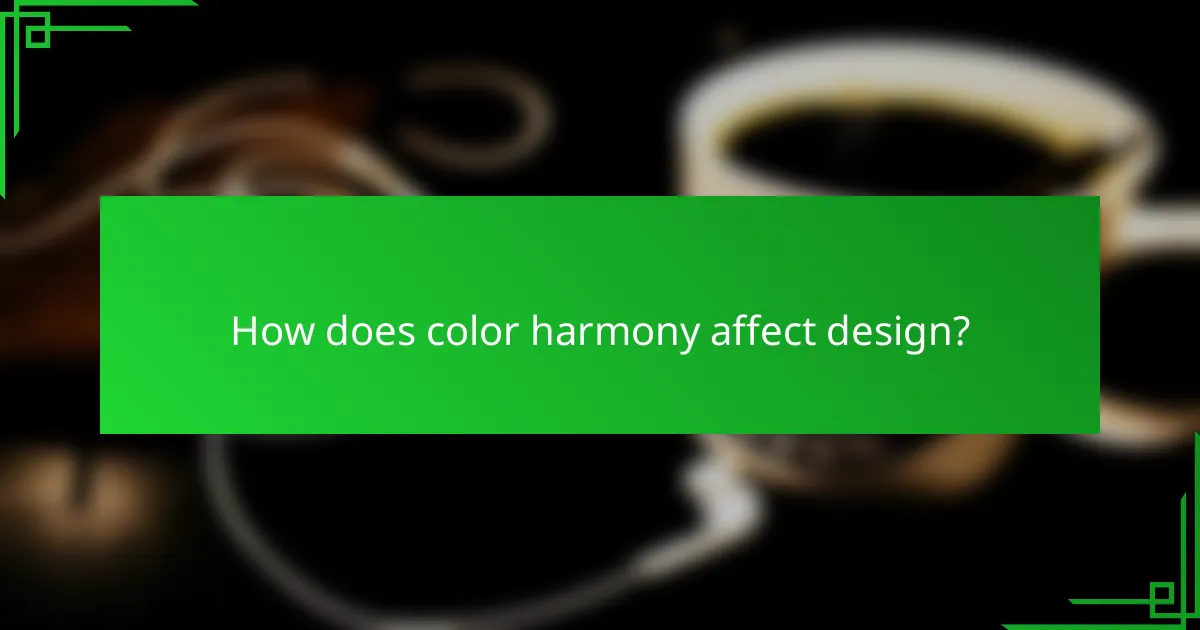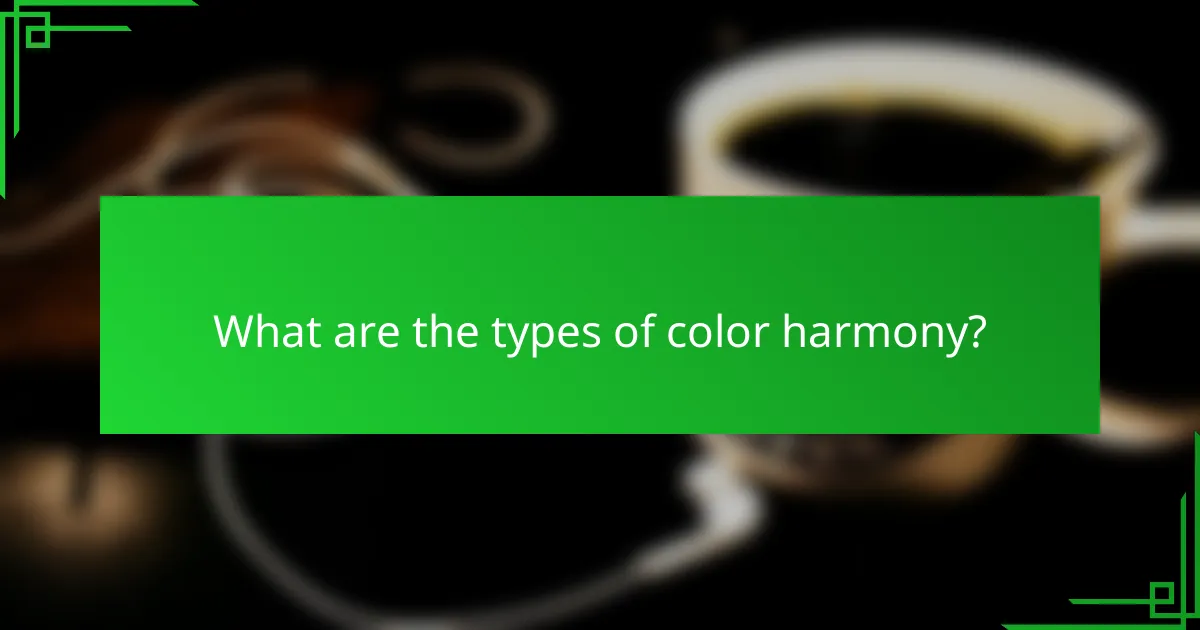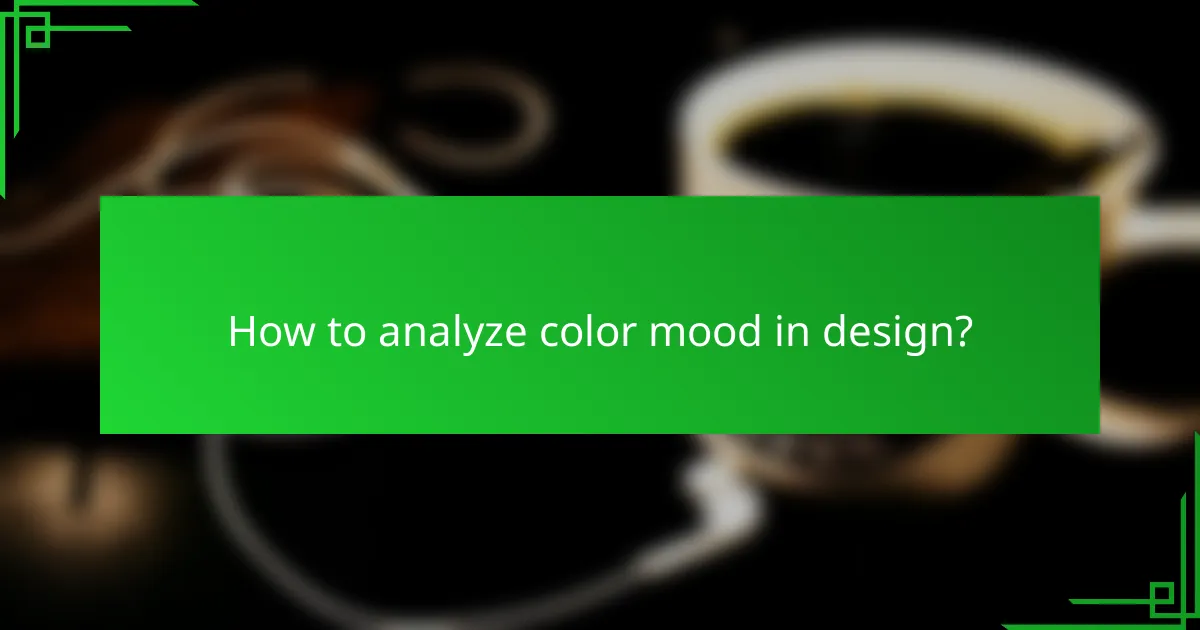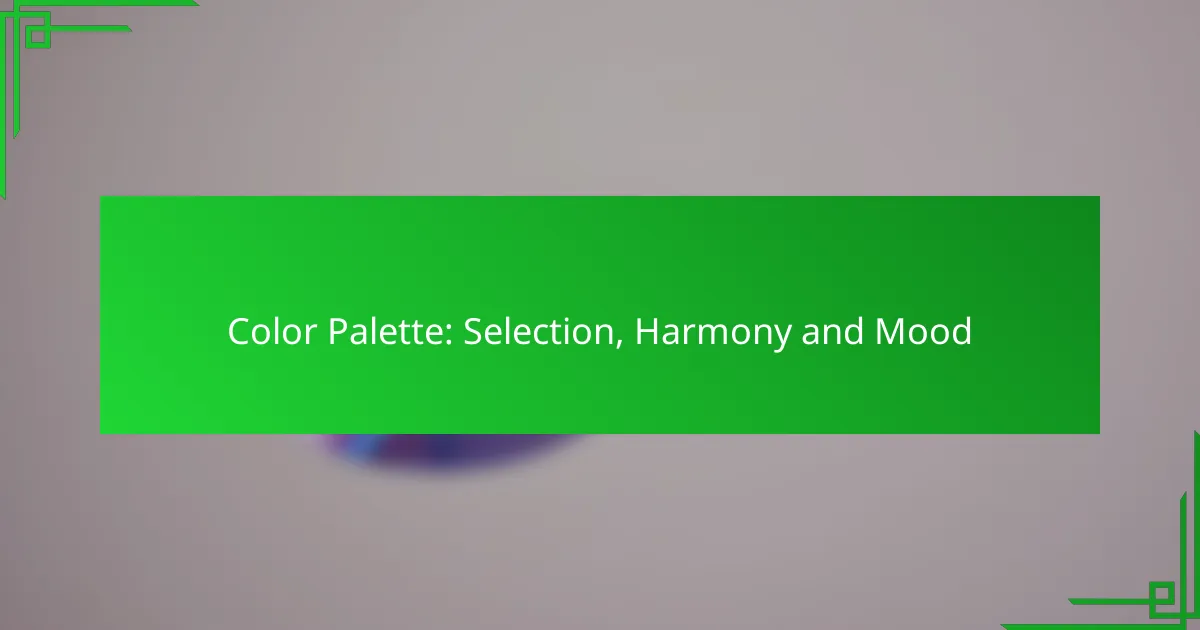Choosing the right color palette is essential for conveying your brand identity and connecting with your audience. A thoughtfully selected palette not only boosts brand recognition but also evokes specific emotions, enhancing the overall impact of your design. Utilizing effective tools for color selection can simplify the process of creating harmonious schemes, ensuring that your colors work together cohesively for a visually appealing result.

How to choose a color palette for your brand?
Choosing a color palette for your brand involves selecting colors that reflect your brand identity and resonate with your target audience. A well-defined palette enhances brand recognition and evokes the desired emotional response.
Consider brand identity
Your brand identity should guide your color palette selection. Think about the values, mission, and personality of your brand; for example, a tech company may opt for sleek blues and grays, while a children’s brand might choose bright, playful colors. Ensure the colors align with your brand’s voice and message.
Develop a mood board that includes colors, images, and typography that represent your brand. This visual reference can help you stay consistent and focused during the selection process.
Analyze target audience
Understanding your target audience is crucial in selecting a color palette. Different demographics respond to colors in unique ways; for instance, younger audiences may prefer vibrant colors, while older consumers might gravitate towards more muted tones. Conduct surveys or focus groups to gather insights on color preferences.
Consider cultural meanings of colors as well, as they can vary significantly across regions. For example, red may symbolize luck in some cultures but denote danger in others.
Utilize color psychology
Color psychology plays a vital role in how your audience perceives your brand. Each color can evoke specific emotions; for instance, blue often conveys trust and reliability, while yellow can evoke feelings of happiness and energy. Choose colors that align with the emotional response you want to elicit.
Use a limited color palette to maintain clarity and focus. Typically, 2 to 4 main colors, along with a few accent colors, can create a cohesive look without overwhelming your audience.
Explore color wheel relationships
Utilizing the color wheel can help you create harmonious color combinations. Complementary colors, which are opposite each other on the wheel, can create vibrant contrasts, while analogous colors, which are next to each other, provide a more subtle and cohesive look. Experiment with different combinations to find what works best for your brand.
Consider using triadic color schemes, which involve three colors evenly spaced around the wheel. This approach can add dynamism while maintaining balance.
Test color combinations
Before finalizing your color palette, test your combinations in various applications, such as your website, social media, and marketing materials. This will help you see how the colors interact in different contexts and ensure they convey the intended message.
Gather feedback from stakeholders and potential customers to refine your choices. A/B testing can also be effective in determining which color combinations resonate best with your audience.

What are the best tools for color palette selection?
The best tools for color palette selection help designers and artists create harmonious color schemes easily. These tools offer a range of features, from generating palettes based on user input to providing inspiration from existing designs.
Adobe Color
Adobe Color is a powerful online tool that allows users to create and explore color palettes based on various color rules, such as analogous, monochromatic, and complementary schemes. Users can extract colors from images or create palettes manually, making it versatile for different design needs.
One notable feature is the ability to save and share palettes within the Adobe Creative Cloud ecosystem, which is beneficial for collaborative projects. Additionally, Adobe Color offers a community section where users can browse and use palettes created by others.
Coolors
Coolors is a user-friendly color scheme generator that allows users to create, save, and export palettes quickly. With a simple click, users can lock in colors they like and generate new combinations, making it easy to experiment with different shades and tones.
This tool also includes accessibility features, ensuring that color combinations are visually accessible to those with color vision deficiencies. Users can export palettes in various formats, including PNG and PDF, which is useful for presentations and design mockups.
Canva Color Palette Generator
The Canva Color Palette Generator is an intuitive tool that allows users to create color schemes from images or manually select colors. By uploading an image, users can automatically extract a palette that reflects the dominant colors, which is particularly useful for branding and marketing materials.
Canva also provides a color wheel feature, enabling users to explore color harmony and contrast. This tool is integrated with Canva’s design platform, making it easy to apply selected palettes directly to design projects.
Paletton
Paletton is a unique tool that focuses on creating color palettes based on a single base color. Users can adjust settings to explore various color harmonies, such as triadic or tetradic schemes, which helps in visualizing how colors interact with each other.
This tool is particularly useful for web designers, as it allows users to preview how colors will look in a layout. Paletton also provides options to adjust brightness and saturation, giving users more control over their final palette choices.

How does color harmony affect design?
Color harmony significantly impacts design by creating a visually appealing and cohesive look. It ensures that the colors used in a design work well together, enhancing the overall aesthetic and functionality.
Creates visual balance
Color harmony contributes to visual balance by distributing colors evenly throughout a design. When colors complement each other, they create a sense of stability, making the design more inviting. For instance, using a color wheel can help identify complementary colors that enhance balance.
Consider using a limited color palette of 3-5 colors to maintain visual equilibrium. This approach prevents overwhelming the viewer and creates a more harmonious appearance.
Enhances user experience
A well-balanced color scheme improves user experience by guiding attention and making navigation intuitive. Colors can highlight important elements, such as buttons or calls to action, ensuring users can easily interact with the design.
For example, using warm colors for action buttons can encourage engagement, while cooler tones can be used for background elements to promote a calm atmosphere. Aim for a consistent color application across all user interfaces to reinforce familiarity.
Influences emotional response
Colors evoke emotions and can significantly influence how users feel about a design. Warm colors like red and orange can create excitement, while cool colors like blue and green often convey tranquility. Understanding these associations is crucial for effective design.
When selecting colors, consider the target audience and the intended message. For instance, a financial website might use blues and greens to instill trust, while a children’s brand could opt for bright, playful colors to evoke joy. Always test color choices with real users to gauge their emotional reactions.

What are the types of color harmony?
Color harmony refers to the pleasing arrangement of colors that create a sense of balance and aesthetic appeal. The main types of color harmony include complementary, analogous, and triadic colors, each offering unique visual effects and emotional responses.
Complementary colors
Complementary colors are pairs of colors that are opposite each other on the color wheel, such as blue and orange or red and green. This contrast creates a vibrant look, making each color appear more intense when placed together. Use complementary colors to draw attention to specific elements in your design or artwork.
When working with complementary colors, consider using one color as the dominant hue while the other serves as an accent. This approach helps maintain balance and prevents overwhelming the viewer. A common pitfall is using equal amounts of both colors, which can create visual chaos.
Analogous colors
Analogous colors are groups of three colors that are next to each other on the color wheel, such as yellow, yellow-orange, and orange. This color scheme creates a harmonious and serene look, often found in nature. Use analogous colors to create a cohesive and calming atmosphere in your designs.
When selecting analogous colors, choose one dominant color and use the others for accents or highlights. This strategy ensures that the palette remains unified while still providing depth. Avoid using too many colors from the analogous group, as this can dilute the overall effect.
Triadic colors
Triadic colors consist of three colors that are evenly spaced around the color wheel, such as red, yellow, and blue. This scheme offers a balanced yet vibrant look, making it ideal for dynamic designs. Triadic color harmony can energize a composition while maintaining visual interest.
To effectively use triadic colors, select one color as the primary hue and use the other two as secondary accents. This method creates a sense of balance while allowing for variety. Be cautious not to overwhelm the viewer with equal amounts of all three colors, as this can lead to a disjointed appearance.

How to analyze color mood in design?
Analyzing color mood in design involves understanding how different colors evoke emotions and influence perceptions. By examining emotional associations, cultural meanings, and the context of use, designers can create visually compelling and emotionally resonant experiences.
Identify emotional associations
Colors carry inherent emotional associations that can significantly impact the viewer’s feelings. For instance, blue often conveys calmness and trust, while red can evoke excitement or urgency. Understanding these associations helps designers select colors that align with the intended mood of their project.
To identify emotional associations, consider using color psychology resources or conducting surveys to gauge audience reactions. A simple heuristic is to group colors into warm (reds, oranges, yellows) and cool (blues, greens, purples) categories, as warm colors tend to energize and cool colors tend to soothe.
Evaluate cultural meanings
Cultural meanings of colors can vary widely across different societies, influencing how a color is perceived. For example, white is often associated with purity in Western cultures, while in some Eastern cultures, it signifies mourning. Designers must be aware of these cultural nuances to avoid misinterpretations.
Researching the target audience’s cultural background can provide insights into appropriate color choices. Engaging with local designers or utilizing cultural color guides can help ensure that the selected palette resonates positively with the intended demographic.
Assess context of use
The context in which colors are used plays a crucial role in their effectiveness. For instance, colors that work well in digital media may not translate effectively to print. Additionally, the surrounding elements, such as typography and imagery, can influence how colors are perceived.
When assessing context, consider the medium, the target audience, and the overall message. A practical approach is to create mockups in different contexts to see how colors interact with other design elements. Always test color combinations in the actual environment where they will be displayed to ensure they convey the desired mood.
